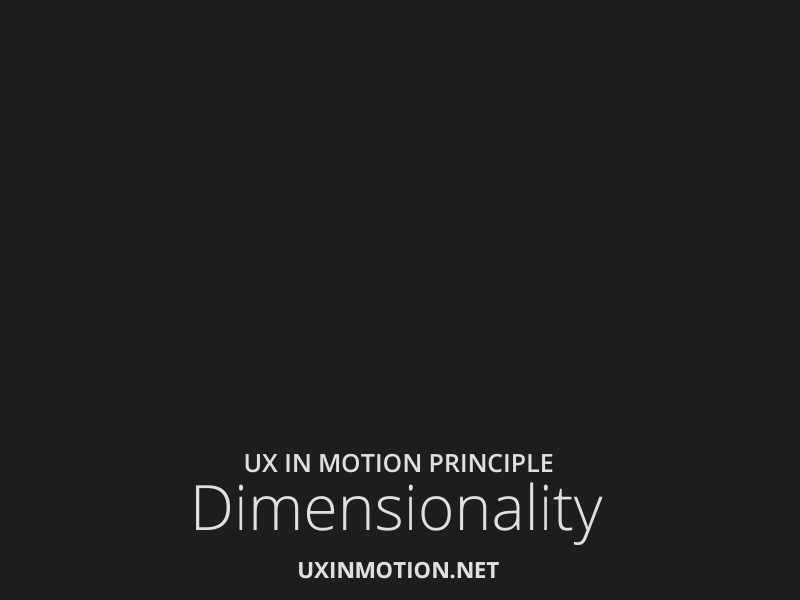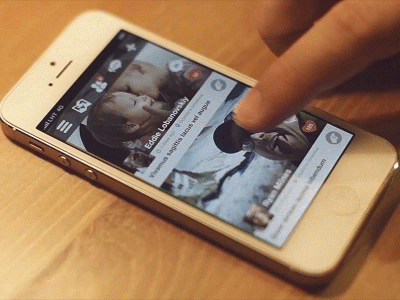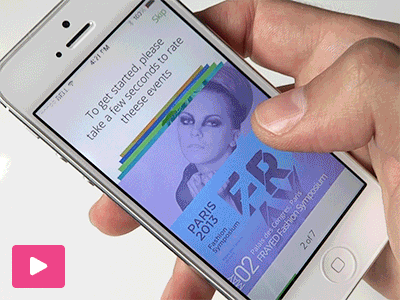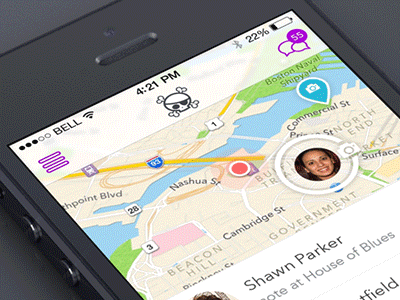Principle 11: Dimensionality
Provides a spatial narrative framework when new objects originate and depart.
 Critical to User Experiences is the phenomenon of continuity as well as the sense of location.
Dimensionality provides a powerful way to overcome the flatland non-logic of User Experiences.
Humans are remarkably adept at using spatial frameworks to navigate both in the real world and in digital experiences. Providing spatial origin and departure references helps reinforce mental models of where users are in the UX.
Additionally, the Dimensionality Principle overcomes the layering paradox in visual flatland wherein objects lacking depth exist on the same plane but occur as 'in front of' or 'behind' other objects.
Dimensionality presents itself in three ways - Origami Dimensionality, Floating Dimensionality, and Object Dimensionality.
Origami Dimensionality can be thought of in terms of 'folding' or 'hinged' three dimensional interface objects.
Critical to User Experiences is the phenomenon of continuity as well as the sense of location.
Dimensionality provides a powerful way to overcome the flatland non-logic of User Experiences.
Humans are remarkably adept at using spatial frameworks to navigate both in the real world and in digital experiences. Providing spatial origin and departure references helps reinforce mental models of where users are in the UX.
Additionally, the Dimensionality Principle overcomes the layering paradox in visual flatland wherein objects lacking depth exist on the same plane but occur as 'in front of' or 'behind' other objects.
Dimensionality presents itself in three ways - Origami Dimensionality, Floating Dimensionality, and Object Dimensionality.
Origami Dimensionality can be thought of in terms of 'folding' or 'hinged' three dimensional interface objects.

 Examples of Origami Dimensionality (Credit: Eddie Lobanovskiy, Virgil Pana)
Because multiple objects are combined into 'origami' structures, the hidden objects still can be said to 'exist,' spatially even though they are not visible. This effectively renders the User Experience as a continuous spatial event that the user navigates and creates an operating context both in the interaction model itself, and in the temporal behavior of the interface objects themselves.
Floating Dimensionality gives interface objects a spatial origin and departure, making the interaction models intuitive and highly narrative.
Examples of Origami Dimensionality (Credit: Eddie Lobanovskiy, Virgil Pana)
Because multiple objects are combined into 'origami' structures, the hidden objects still can be said to 'exist,' spatially even though they are not visible. This effectively renders the User Experience as a continuous spatial event that the user navigates and creates an operating context both in the interaction model itself, and in the temporal behavior of the interface objects themselves.
Floating Dimensionality gives interface objects a spatial origin and departure, making the interaction models intuitive and highly narrative.
 Example of Floating Dimensionality (Credit: Virgil Pana)
In the above example, Dimensionality is achieved through the use of 3D 'cards.' This provides a strong narrative framework that supports the visual design. The narrative is extended by 'flipping' the cards to access additional content and interactivity. Dimensionality can be a powerful way to introduce new elements in ways that minimize abruptness.
Object Dimensionality results in dimensional objects with true depth and form.
Example of Floating Dimensionality (Credit: Virgil Pana)
In the above example, Dimensionality is achieved through the use of 3D 'cards.' This provides a strong narrative framework that supports the visual design. The narrative is extended by 'flipping' the cards to access additional content and interactivity. Dimensionality can be a powerful way to introduce new elements in ways that minimize abruptness.
Object Dimensionality results in dimensional objects with true depth and form.

 Examples of Object Dimensionality (Credit: Issara Willenskomer, Creativedash)
Here, multiple 2D layers are arranged in 3D space to form true dimensional objects. Their dimensionality is revealed during realtime and non-realtime transitional moments. The utility of Object Dimensionality is that users develop a keen awareness of object utility based on non-visible spatial locations.
Examples of Object Dimensionality (Credit: Issara Willenskomer, Creativedash)
Here, multiple 2D layers are arranged in 3D space to form true dimensional objects. Their dimensionality is revealed during realtime and non-realtime transitional moments. The utility of Object Dimensionality is that users develop a keen awareness of object utility based on non-visible spatial locations.